Words Justin Croft Photographs Hope Fitzgerald
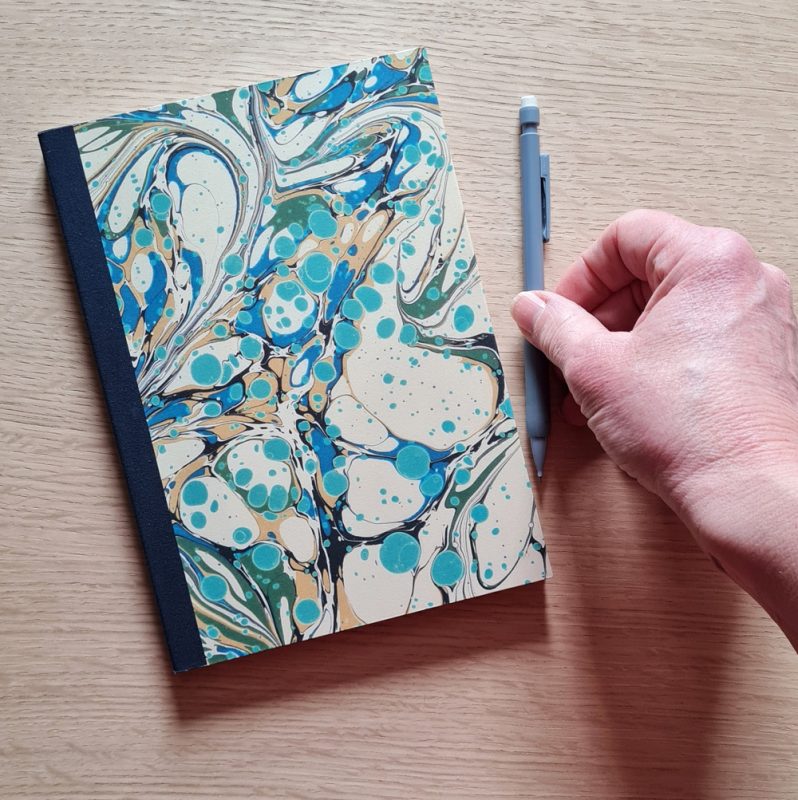
A Hope Fitzgerald ‘Bindfulness’ marbled paper notebook
Even in our digital world, we think nothing competes with the pleasure of a new book – whether it’s to read, or to write and draw in. Do you notice the scent of the paper, the satisfying texture of the the cover and the whisper of the turn of a page? If you do, you’ll appreciate that these sensations come from the quality of a book’s binding and are not to be taken for granted. Of course, most of the books we come across are machine made, but there’s still tremendous variation. Do you find some books fall open delightfully while others seem too tight? Some paper smells divine, some decidedly less so? And why do some covers feel smooth and silky, others rough and unappealing? We’re not always conscious of it but a book’s binding is part of its soul.
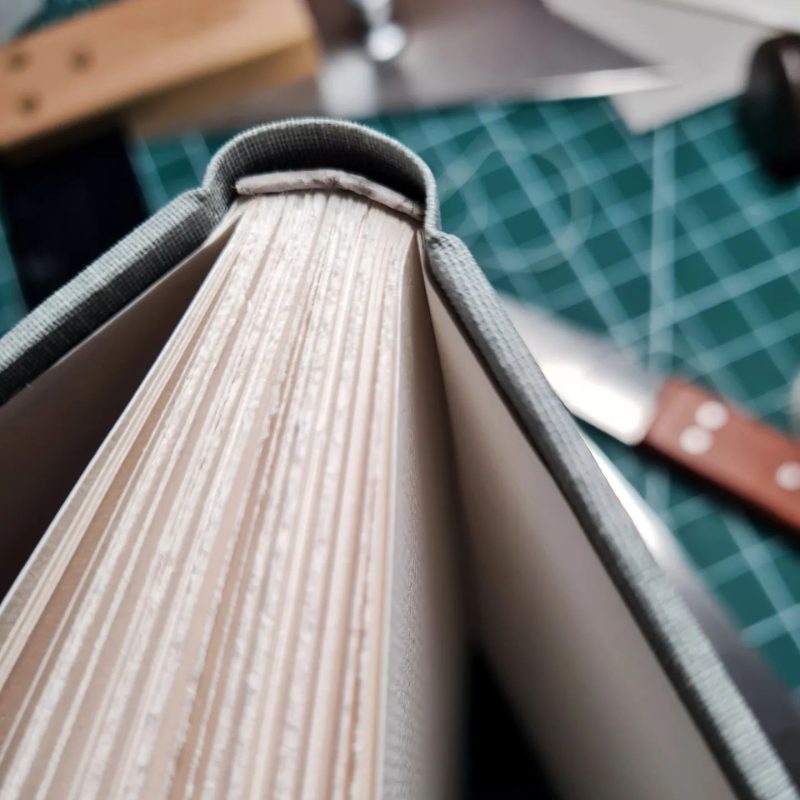
All important binding details on a book in progress
Bookbinding is as old as the technology of the book itself and dates back thousands of years. It’s the binding that makes a book a book, rather than just a pile of paper and it’s a magical art. Hand binding was everywhere before the Industrial Revolution, but then became less common, and by the 20th century was mostly reserved for fine and costly books. Hand binding became rarer and rarer, and despite some notable revivals (the Arts and Crafts movement and the modern phenomenon of the ‘Artist’s Book’ are examples) its skills have sometimes been in danger of dying out entirely.
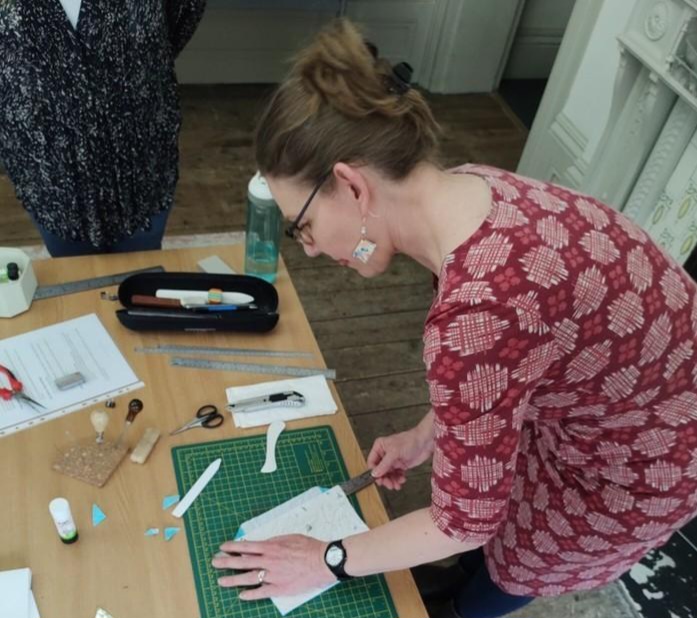
Hope at work leading a binding workshop
We were excited therefore to hear of Hope Fitzgerald’s wonderful hand bound books and her Bindfulness initiative for sharing her expertise. She is one of a new wave of bookbinding exponents in whose hands the future of the craft rests. Being largely self-taught she is mindful of the help and advice she received along the way from other binders and now offers her own well received teaching workshops to pass on what she has learned.
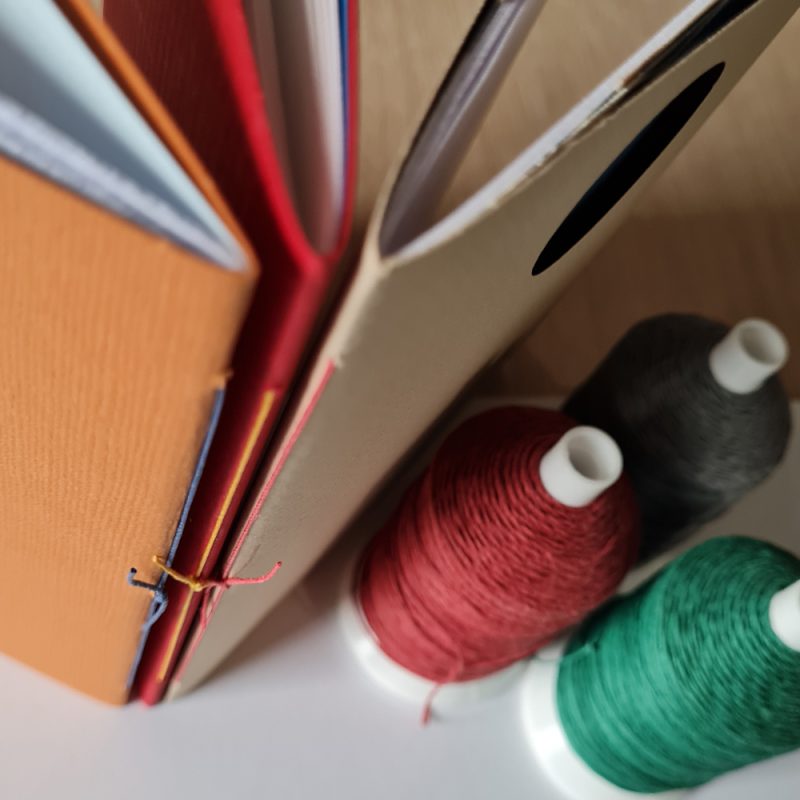
Sewing details
In Hope’s hands, carefully chosen papers, boards and thread are coupled with meticulous accuracy in cutting and sewing. Add to that an artist’s eye for proportion and restrained ornament and the result is a beautiful, functional and satisfying volume. Though she works to commission and is happy to discuss special projects, most of Hope’s books are blanks – filled with fresh, crisp paper waiting to receive your thoughts. We love the range of marbled and other decorative papers she uses to cover the external boards of each book, and the eye-catching combinations of patterns and block colours. Each is in some way unique. They look great on the website, but even better in the flesh. Hope likes to keep a selection on display at T et Al in Faversham’s market place, a venue proving itself to be a great showcase for local artists and craftspeople.
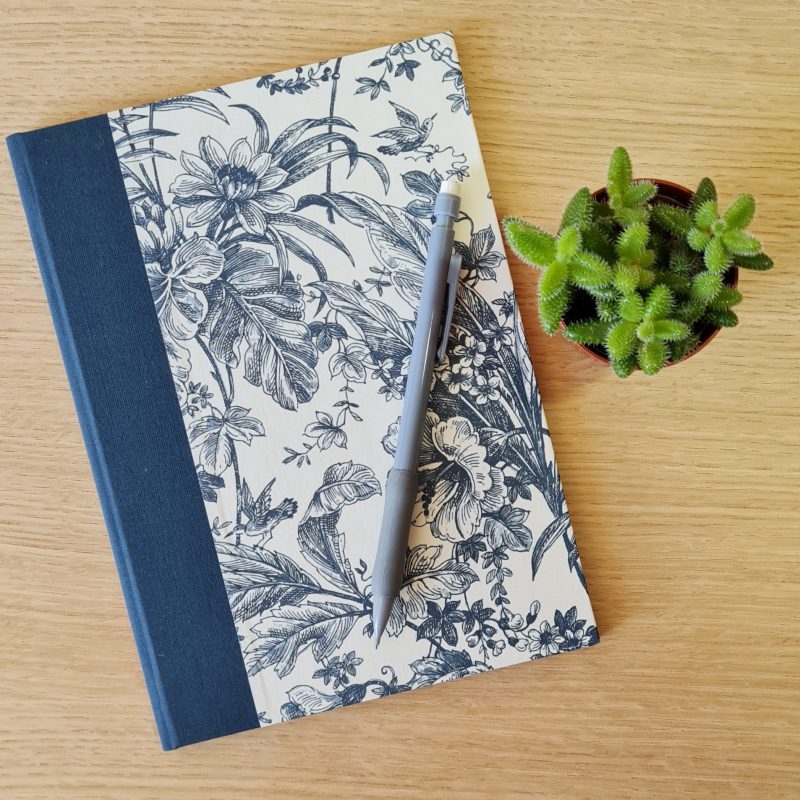
An elegant blue ‘Bindfulness’ book
American by birth, Hope studied for a degree at Skidmore College in New York, presumably unaware of the pathways ahead which would lead her to Faversham, where she’s long been a resident, bringing up three now-fledged daughters with her husband Matthew. She gained a distinguished Masters degree at the University of the Creative Arts in Canterbury and also studied at Christchurch Canterbury. She is therefore an experienced artist in various media, notably photography and videography and brings that experience to her work with books.
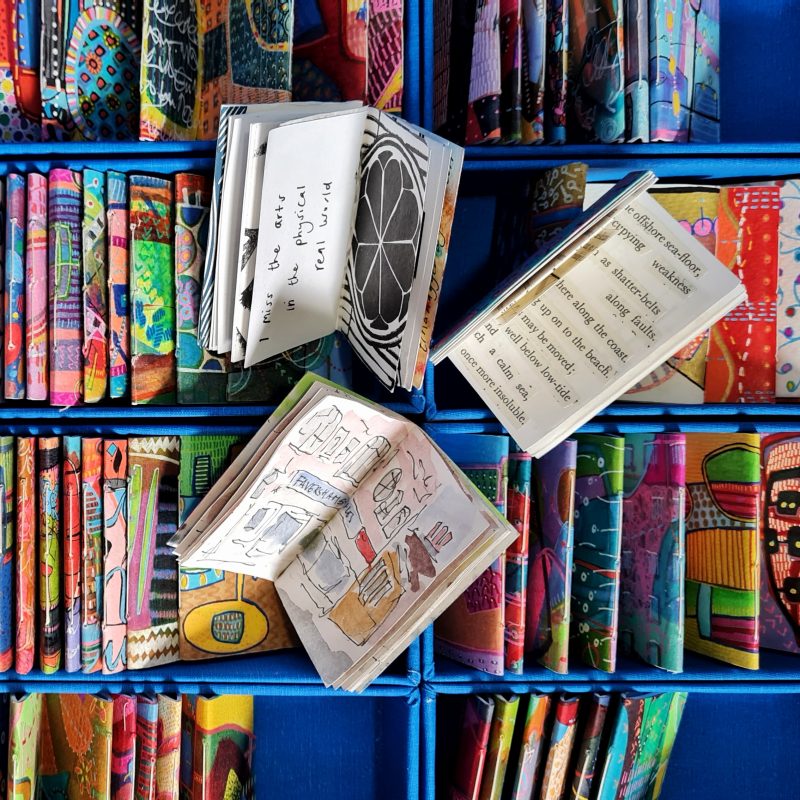
Books from The Tiny Book Collaboration
She is especially interested in collaborative projects, where the artist is a facilitator rather than a lonely creator, and has set up what she calls the Tiny Book Collaboration
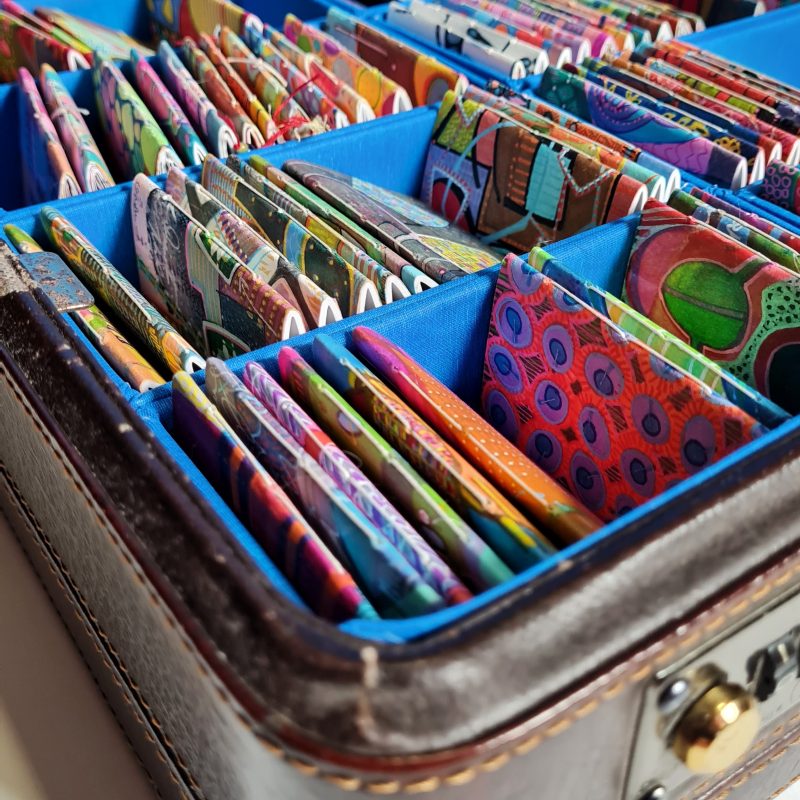
A library in a briefcase
Its a way of seeing books not just as individual creations but part of a library, which is, after all their natural home. She creates diminutive and desirable blank volumes, bound by herself with individual cover designs in eye-popping colours. She sends them out to collaborators (who contribute a small subscription) to fill with their own thoughts and ideas, sometimes with drawings, collages or other traces of their everyday experiences. They are then sent back to Hope who adds them to the library, all housed in a neat and sentimentally-significant briefcase. It’s a lovely way of uniting people whose practice and artists and writers may otherwise be quite solitary in a shared and mutually supportive project. The variety is endless and the library continues to grow.
It seems to us to be a very satisfying way to bring the ancient craft of bookbinding to new audiences and to celebrate what is still unique and special about the technology of the book.
For more details of Hope’s books, upcoming workshops and collaborations visit the website www. bindfulness.com
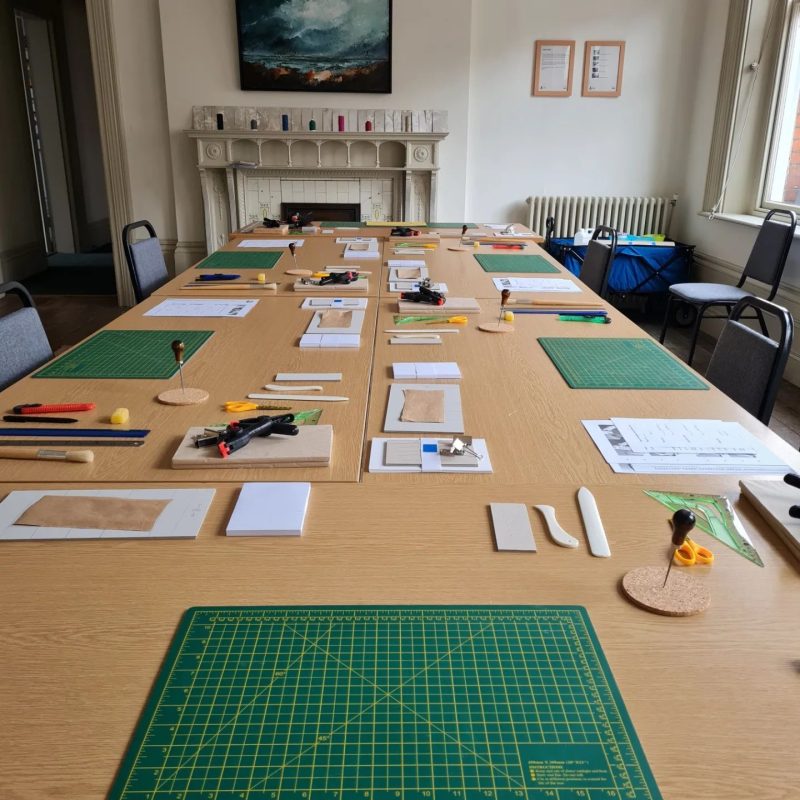
The workshop room and array of binder’s tools ready for action
Text: Justin Croft. Photography: Hope Fitzgerald